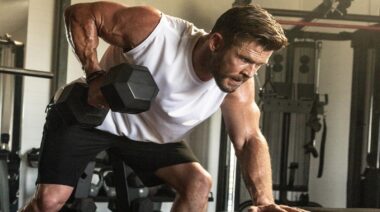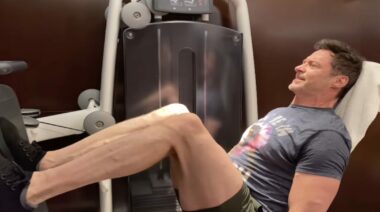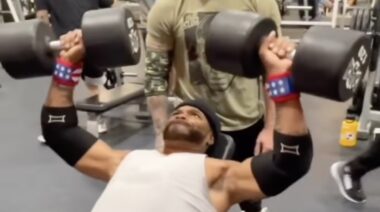When it comes to talking about food and dieting in the fitness industry, one term you hear over and over is macronutrients. It’s lesser discussed counterpart – micronutrients – are the topic for today’s piece.
When it comes to talking about food and dieting in the fitness industry, one term you hear over and over is macronutrients. It’s lesser discussed counterpart – micronutrients – are the topic for today’s piece.
While often disregarded in the fitness industry, micronutrients are essential for optimal body function and reaching your fitness goals. Namely, the goal of body recomposition.
So if you’re looking to step your game up, expand your knowledge and improve your health, micronutrients are where we need to start. Let’s get into it.
What Are Micronutrients?
Starting with the basics, the difference between macro and micro nutrients is in the name – large and small nutrients. This doesn’t refer to their physical size, but rather the quantity required in a healthy diet to consume body functions. Macronutrients include the three staples: protein, carbohydrates and fat, which make up the bulk of your calories.
Within the three macronutrients, you have micronutrients. Micronutrients refer to vitamins and minerals that are consumed in smaller amounts, and most are found within the larger macronutrient group.
For example, avocados contain micronutrients – 20 vitamins, minerals and phytonutrients – and is also a fat, within the macronutrient grouping.
However some micronutrients aren’t found in macronutrients, for example vitamin D is created directly from sun exposure, when the UVB rays hit the cholesterol in the skin cells, vitamin D synthesis occurs. But as a sweeping statement – micronutrients are predominantly found in food, within the three main macronutrients.
Daily body functions require an array of different vitamins and each has a unique role and function.
There are 13 essential vitamins, meaning that they are essential for your body to work optimally, and without them you may experience negative side effects ranging from dry hair, acne, increased fat storage and more unfavorable side effects.
Vitamins can be grouped into two main categories: fat soluble or water soluble. There are four fat soluble vitamins: A, D, E and K that are absorbed readily when consumed with fat, because they are stored in adipose tissue.
Water soluble vitamins – the remaining nine – are not stored in the body, highlighting the need to maintain a healthy, vitamin rich diet for optimal functioning and performance
Some of the functions of vitamins include:
- Immune health
- Healthy and hydrated skin and hair
- Strong bones and nails
- Metabolic health and nutrient absorption
- Heart health
- Brain health
- Nervous system regulation
- Hormonal balance and homeostasis
- Fighting free radicals and repairing DNA damage
Minerals also help your body to function, some examples of minerals include calcium, magnesium and potassium. Minerals play an essential role in bone health, growth, regulating fluids in the body, heart health, transmitting nerve impulses and are precursors to many hormones.
For example, as shown in a 2014 study, the mineral iodine is found in the thyroid hormone, which plays a role in the metabolism, amongst others.
Where Are Micronutrients Found?
As briefly touched on, micronutrients are predominantly found within carbohydrates, fats and proteins.
Each whole food – i.e. food that hasn’t been processed – is likely to contain a number of different vitamins and minerals. Often, these micronutrients cause the food to have a certain color, known as phytonutrients.
Phytonutrients are found in plant foods and are correlated with certain vitamins and minerals, which is why you’re often told to ‘eat the rainbow’, with each color providing a unique vitamin and mineral density.
Here are some example sources of micronutrients:
- Calcium – milk, yogurt, spinach, kale, sardines
- Vitamin B12 – beef, chicken, fish, cheese, egg
- Potassium – bananas, spinach, potatoes
- Vitamin C – oranges, lemons, strawberries, broccoli
- Vitamin E – vegetable oils like sunflower oil, nuts and seeds, spinach, broccoli
- Vitamin K – kale, spinach, brussels sprouts, broccoli, fish, beef
As you can see – whole foods and plant foods are rich in micronutrients. If you’re wondering whether you’re lacking any micronutrients, the best advice is to adopt a plant based, whole food diet that includes foods with an array of different colors, that have been the least processed as possible.
This is of utmost importance if your goal is body recomposition, let’s get into the reasons why.
Micronutrients and Body Recomposition
Body recomposition is a term used in the fitness industry to describe the process of losing body fat and gaining muscle mass, you can read more about it here.
The way you do this is by increasing your energy expenditure, hitting effective and efficient workouts and implementing progressive overload to strategically increase your strength, build muscle and ultimately boost your metabolic rate. Simultaneously, calories will need to be closely monitored – most recommend eating around maintenance – to lose excess body fat.
So how does this link to micronutrients? It comes down to the magic word: optimization.
Optimizing Body Recomposition
If you want your body to work as efficiently as possible, you need to be providing it with the tools to do so. As much as trainers would like to believe it’s as simple as ‘calories in vs. calories out’, there is so much more to it than that.
For example, 100 calories of ice cream is not the same as 100 calories of kale. You can read more about that in this article I wrote.
Within a calorie, you have different macro and micronutrient offerings. If you are deficient in any vitamins, you’re not going to be optimizing your fat loss or muscle gain efforts. In fact, you could be preventing yourself from achieving any progress.
For example, vitamin D deficiency is associated with fat storage – a study that examined low vitamin D levels in a group of women found that those with the lowest gained more weight over the course of the study, despite not changing their diets at all.
Another example of this is B vitamins. B vitamins are essential for metabolic function. If you’re deficient or insufficient in any of the B vitamins, your body is going to be in fat storage mode.
This is because the main function of B vitamins is to metabolize macronutrients, and so if you don’t have enough circulating, you’re going to be storing way more calories than you could have otherwise been burning.
A study found that vitamin B supplementation was able to reduce body weight by increasing the metabolism.
When it comes to building muscle, if you’re deficient in any nutrients you’re also going to face similar problems. Vitamin E is an antioxidant that fights free radical damage and helps to flush out metabolic waste.
During exercise, you create oxidative stress, if you don’t have enough circulating vitamin E, you’re going to experience intensified delayed onset muscle soreness (DOMS), poor recovery and stunted muscle protein synthesis.
Not ideal. A study published in the International Journal of Preventive Medicine found that vitamin E supplementation improved recovery by reducing muscle damage markers.
To conclude, if you’re busy counting your macros without much thought for your micros – you need to repriotizie. Micronutrients help your body to work optimally, and without them, you’re going to experience negative side effects and your fitness goals will move further out of reach.
As mentioned, adopting a diet rich in whole plant foods with an array of colors will provide you with the majority of your micronutrient needs.






